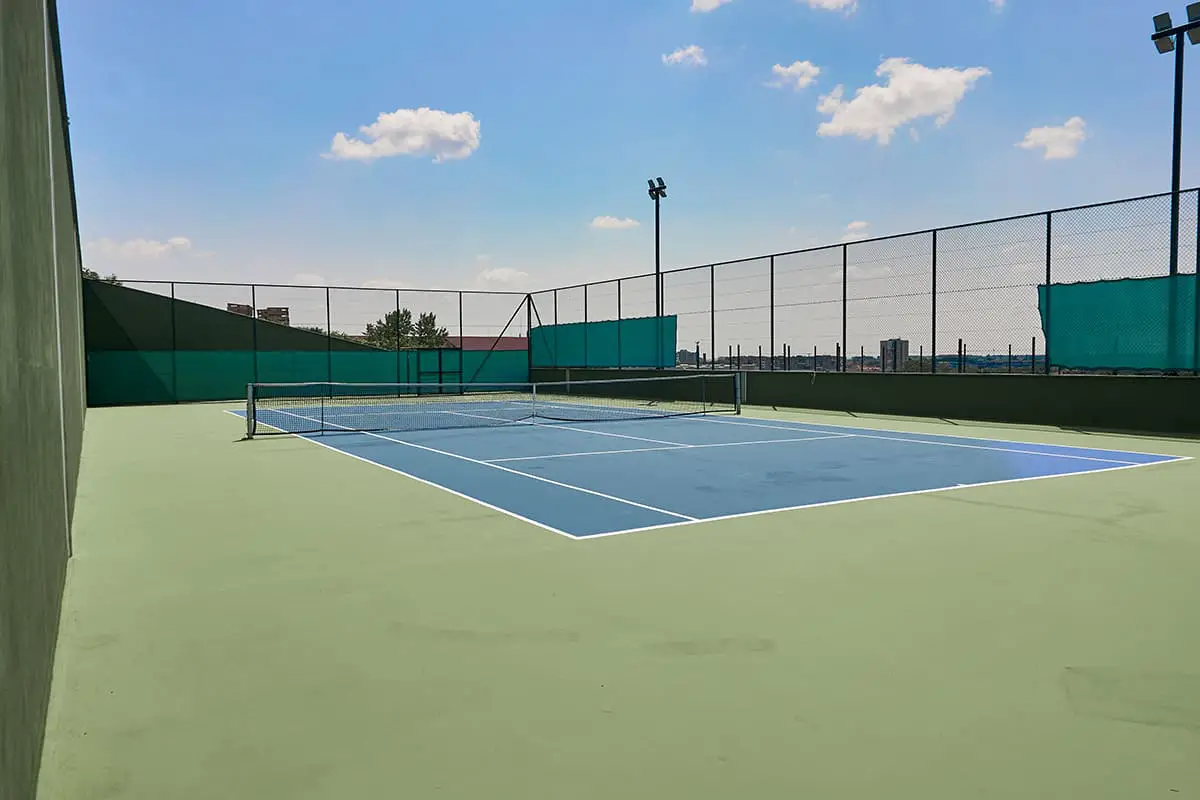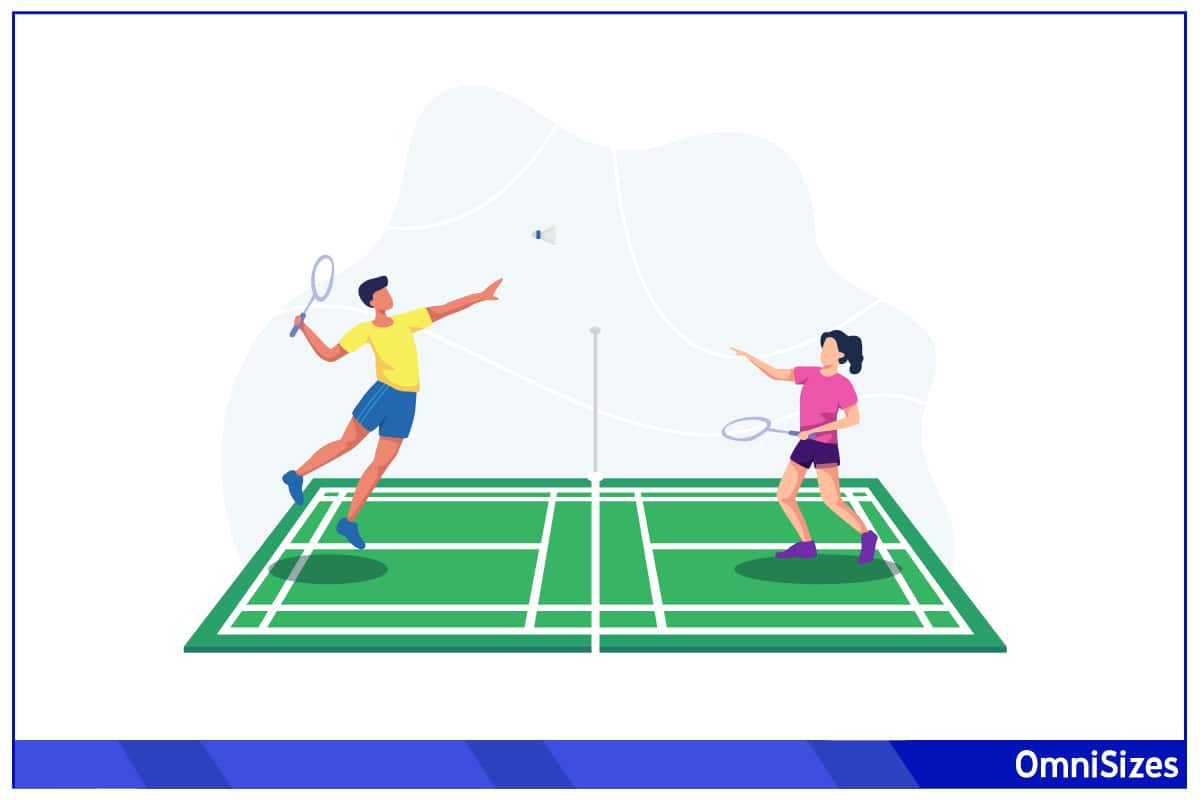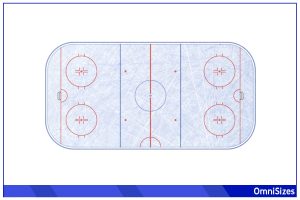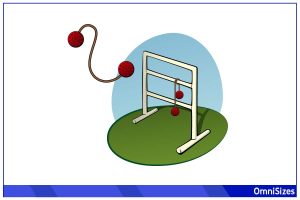Badminton demands more than just agility and strategy. The court is defined by precise measurements that shape the game. The playing field, or rather badminton court sizes, is where all the action happens.
The official badminton court size, as per the Badminton World Federation, measures 13.4 × 6.1 meters (44 × 20 feet) for doubles and 13.4 × 5.18 meters (44 × 17 feet) for singles. These dimensions are true for both indoor and outdoor badminton courts.
This article will cover everything about badminton court sizes, from standard dimensions to setting up your own court.
Standard Dimensions of a Badminton Court
Badminton is a blast, right? But to really get your game on, knowing the size of the court can be a game-changer.
Badminton courts have specific measurements that are key to the game. The overall length of the court, per Badminton Word Federation guidelines, is 44 feet, and when you’re playing doubles, the width is 20 feet. For singles, it shrinks to 17 feet wide.
In singles, the court feels snugger. You have less space on the sides, making the game faster and more intense. Doubles games spread out more with extra width, so there’s more ground to cover and more strategies in play.
Court Markings and Their Significance
Ever noticed those lines on a badminton court? They’re not just there for show. Each line and marking has a role in helping players know where to serve, where to stand, and what’s in or out.
1. Boundary Lines
Boundary lines span the entire perimeter of the court, so their measurements are identical to the playing field for both doubles and singles courts (44 × 20 feet and 44 × 17 feet, respectively).
2. Service Lines
In badminton, service lines are 15 feet from the net in singles, giving a deeper service area. In doubles, they’re a bit closer at 13 feet from the net. This difference changes how you serve and receive, adding a twist to the game.
3. Net and Center Line
While not a physical line on the court, the net acts as a line too. It divides the court in half, creating a challenge to get the shuttle over but within the boundaries. The dimensions of a badminton net are 20 feet wide and 2 feet 8 inches tall.
Running from the back boundary to the service line is the center line. It splits the service area into 2 equal boxes. This is where players serve and receive, so it’s a hotspot for action.
3. Short Service Line
The short service line is 6 feet 6 inches from the net. It’s like a no-go zone for serves. If your serve doesn’t cross this line, it’s a fault. This line makes sure serves are challenging but fair.
4. Lines Thickness
All these lines are about 1.57 inches thick. They need to be visible but not so thick that they’re a distraction or a tripping hazard.
Setting Up Your Own Badminton Court

Dreaming of playing badminton in your own backyard or local gym? Setting up your own court isn’t as tough as it sounds. Here’s a step-by-step guide to get you started on creating your very own badminton haven.
1. Choosing the Right Spot
First up, find a flat, open space that has enough space (44 × 20 feet, remember?). If you’re setting it up outdoors, look for a spot away from trees and other windbreaks for a steady game. Indoors? Make sure the ceiling is high enough so that high shots don’t get interrupted.
2. Gathering Your Tools and Materials
- Measuring tape
- Rope or chalk
- A net
- Stakes or poles (usually included in a badminton net set)
- Hammer or mallet
- Shuttlecocks and rackets
3. Marking the Court
Using your measuring tape, mark out the dimensions of the court. Use rope or chalk to mark the boundary lines, service lines, and center line. If it’s a permanent setup, you might want to paint the lines.
4. Setting Up the Net
The net splits the court in half. It should be 5 feet 1 inch high at the edges and 5 feet in the center. Place your poles or stakes at the ends of the court and make sure the net is taut and at the right height.
5. Choosing the Right Surface
If you’re outdoors, grass is fine for a casual game, but for a more serious play, consider a flat, even surface like concrete. Indoors, wooden or synthetic floors work best. Just make sure it’s non-slip to avoid accidents.






